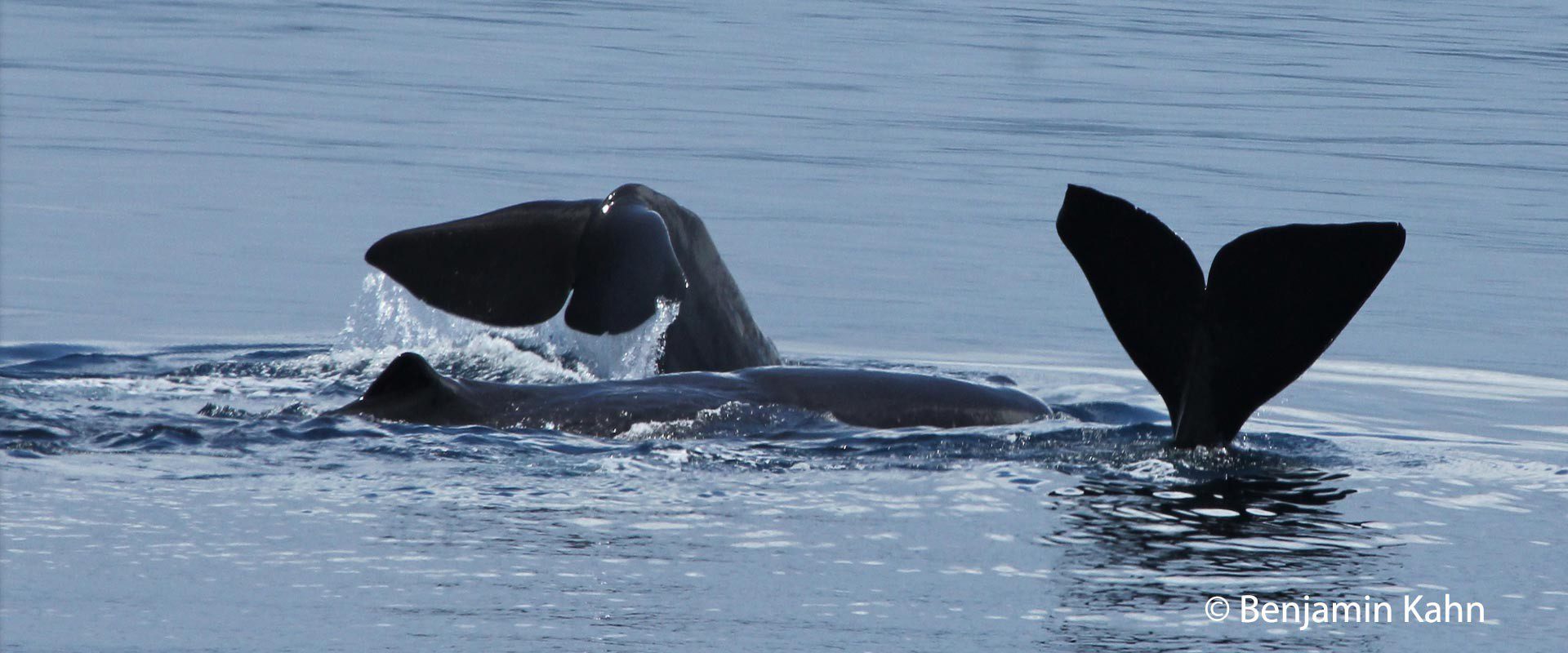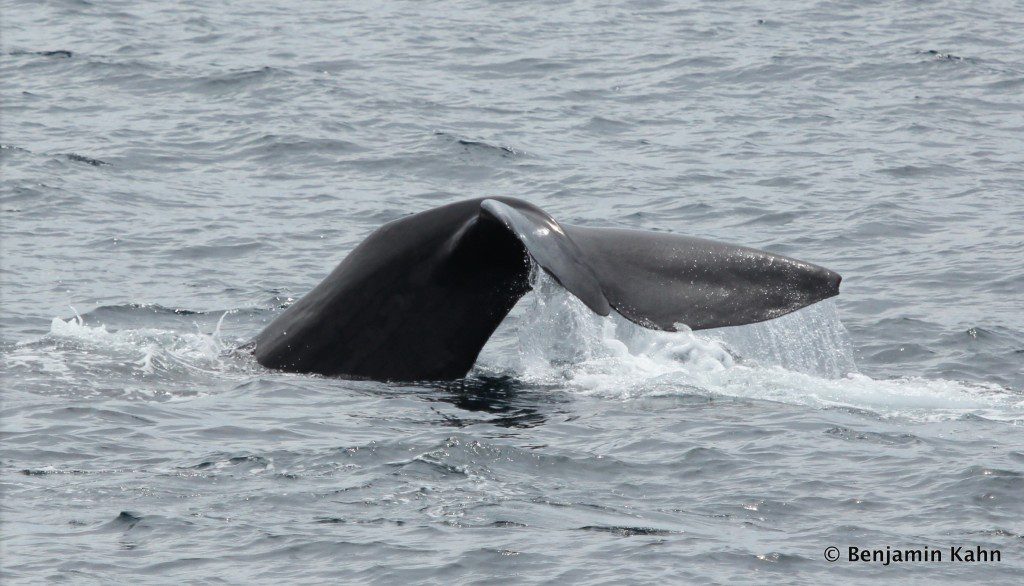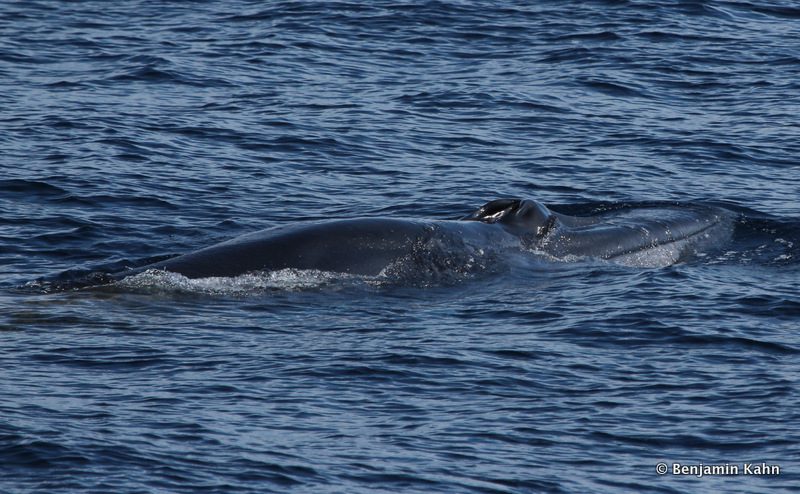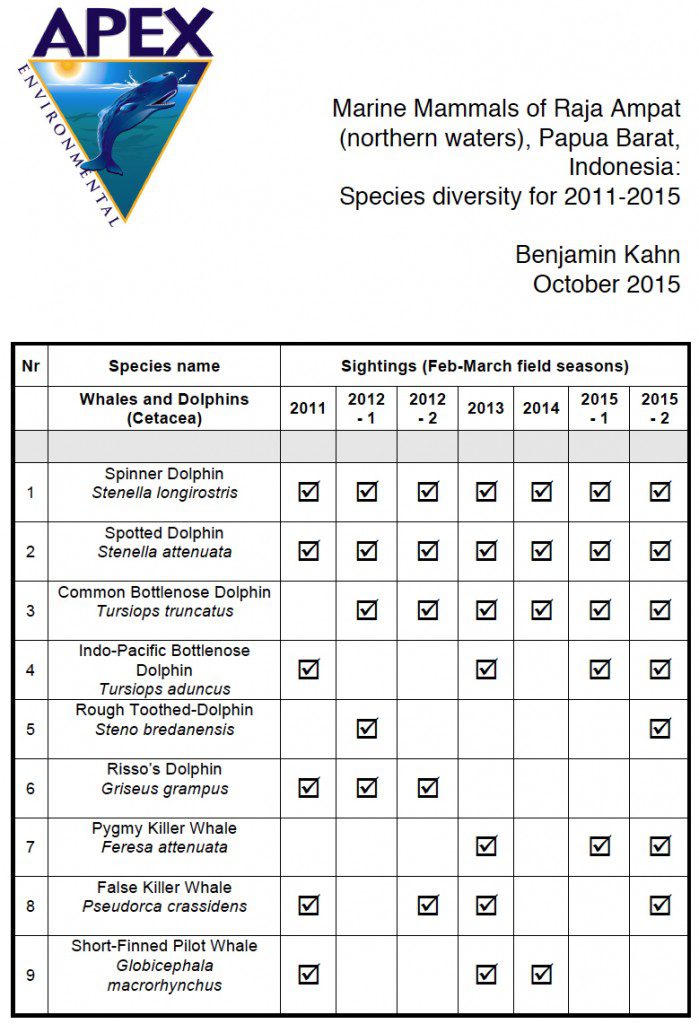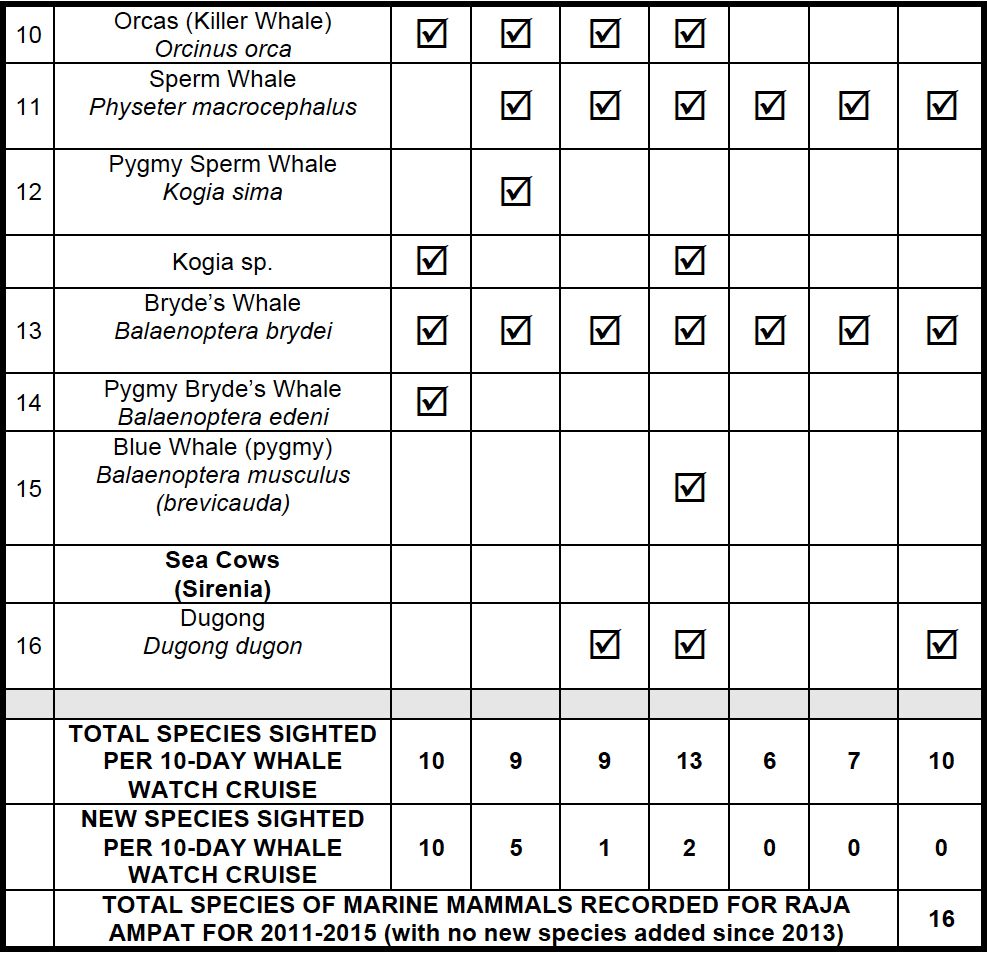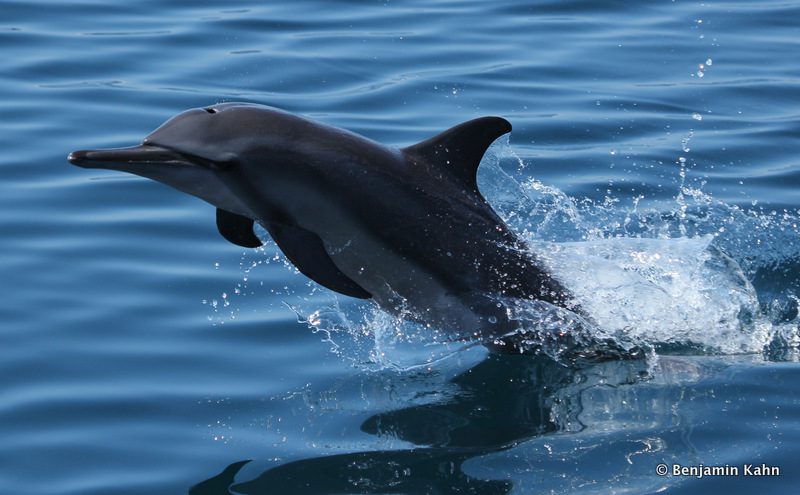Marine Mammal Species Biodiversity in Raja Ampat (2011-15) by Benjamin Kahn
Marine Mammal Species Biodiversity in Raja Ampat (2011-15)
by Benjamin Kahn
Raja Ampat is a world-class dive destination and is famous for its exceptional reef species diversity as well as (oceanic) manta cleaning stations, relatively abundant sharks and pelagics. Overall coral cover and reef health is stunning at many places. So its reputation as a “must-sea” for anyone interested in our oceans is rightly deserved.
Raja is an amazing place for all these reasons and more.
What is less well known is that Raja is also a hotspot for whales and dolphins. We have been fortunate to have worked there almost every year since 2007[1] to conduct cetacean Rapid Ecological Assessments (in collaboration with TNC and CI), give training workshops and assist whenever possible with the design and establishment of the Marine Protected Area (MPA) network that is now in place to ensure cetacean habitats like the Dampier Strait are also represented. This region includes many important habitats for whale species such as Bryde’s, sperm and pilot whales. Resident coastal and oceanic dolphin species are commonly seen, indicating abundant prey resources. Rare sightings include blue whales and pygmy sperm whales.
The table below summarizes the species sightings to date in a basic annual species list. This list is compiled from our 2011-2015 “Whale and macro” expeditions conducted on the Pindito live–aboard. These expeditions are a unique mix of what Raja has to offer: whale watch/dive/snorkel/seabird/combined reef and oceanic ecology.
In short, the total species sighted for Raja Ampat stands at 16 spp. We haven’t encountered any new species for the last 2 years. This indicates that we are leveling off on the new species count. The species that we encounter each year are more common than those we sight less frequently. We do expect a few more oceanic species (especially beaked whales) to eventually be sighted. This list does not include the Indo-Pacific humpbacked dolphin for example, Sousa chinensis (or Sousa sahulensis). These “pink dolphins” inhabit the vast Mayalibit Bay that cuts through central Waigeo. But our expeditions don’t include this enclosed bay, and focus instead on the Dampier Strait, Mansuar Canyon, Batanta, Penemu, Gam and the northwestern waters as we island hop north towards Wayag. On several days we head out towards deep open water beyond the 200m-depth contour where we can deploy our hydrophones. So over time this table will get updated with more species and increased marine mammal diversity for Raja Ampat.
Obviously we record a lot of fine-scale data for each sighting such as group size, group composition, surface intervals, blow rates, species associations and a suite of behaviors. On rare occasions we snorkel with friendly whales (and twice we had jaw-to-jaw encounters with friendly orcas, yes ORCAS, in Raja Ampat!).
Additional observations relate to other large marine life we encounter along the way (jumping billfish, mantas, turtles, oceanic sunfishes, hammerhead sharks, etc.). We also collect data that relates to our on-going work on threat assessments such as increasing plastic debris. Our initial outcomes indicate that plastic trash concentrates in current lines that are prime foraging habitats for Raja’s Bryde’s whales and seabirds. Oil and gas developments nearby and exploratory seismic surveys (ocean noise) are other concerns.
More information about our Coral Triangle Oceanic Cetacean program can be found at our website, Apex Environmental. A quick summary on our work is also provided here:
The Coral Triangle Oceanic Cetacean Program aims to expand the existing knowledge of the Earth’s most abundant yet least known marine ecosystem – the open ocean – with particular emphasis on “deep-sea yet near-shore” habitats such as seamounts, pinnacles and persistent upwelling zones. One of our priority areas are the Indo-Pacific migratory corridors of east Indonesia, Timor Leste, Papua New Guinea and the Solomon Islands; and the importance of these narrow yet deep passages for large migratory marine life, in particular blue and sperm whales; in addition we focus on how to integrate productive oceanic and deep-sea habitats within MPA Networks and Seascape initiatives.
In addition to our work on marine mammals, we have also assisted with numerous regional marine conservation programs such as eco-regional Marine Spatial Planning, Integrated Ocean Management, Marine Protected Area (MPA) Network development, design, MPA management plans and zonations, national fisheries reviews, capacity building assessments, best practice reviews for offshore industries (in particular the energy sector: seismic surveys, oil and gas exploration), shipping and marine tourism development. These activities are geared towards providing innovative solutions for nature-based industries that have minimal environmental impact, are cost-effective and provide long-term ecological and economical sustainability. Educational and training activities focus on tropical marine mammal conservation issues in SE Asia and the South Pacific Islands. We have also provided support for several land-mark film series and nature documentaries including the Discovery Channel, Animal Planet, Paramount Pictures,
BBC Natural History Unit, and ZDF,
APEX Environmental is a member of several expert groups at the IUCN (International Union for the Conservation of Nature) and large-scale initiatives including:





































